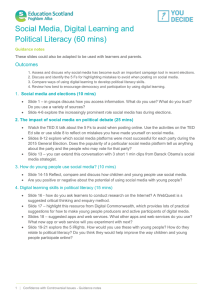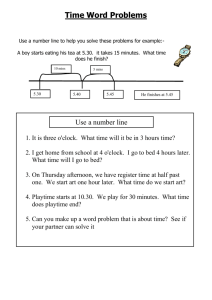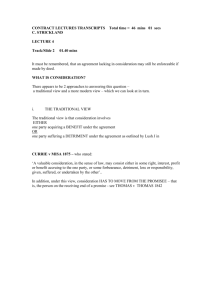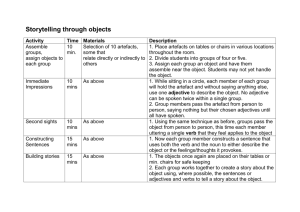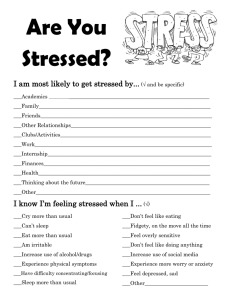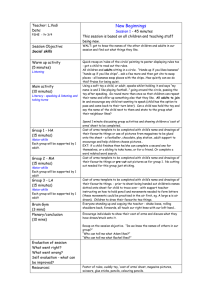Participation in Political Literacy (60 mins) Outcomes
advertisement
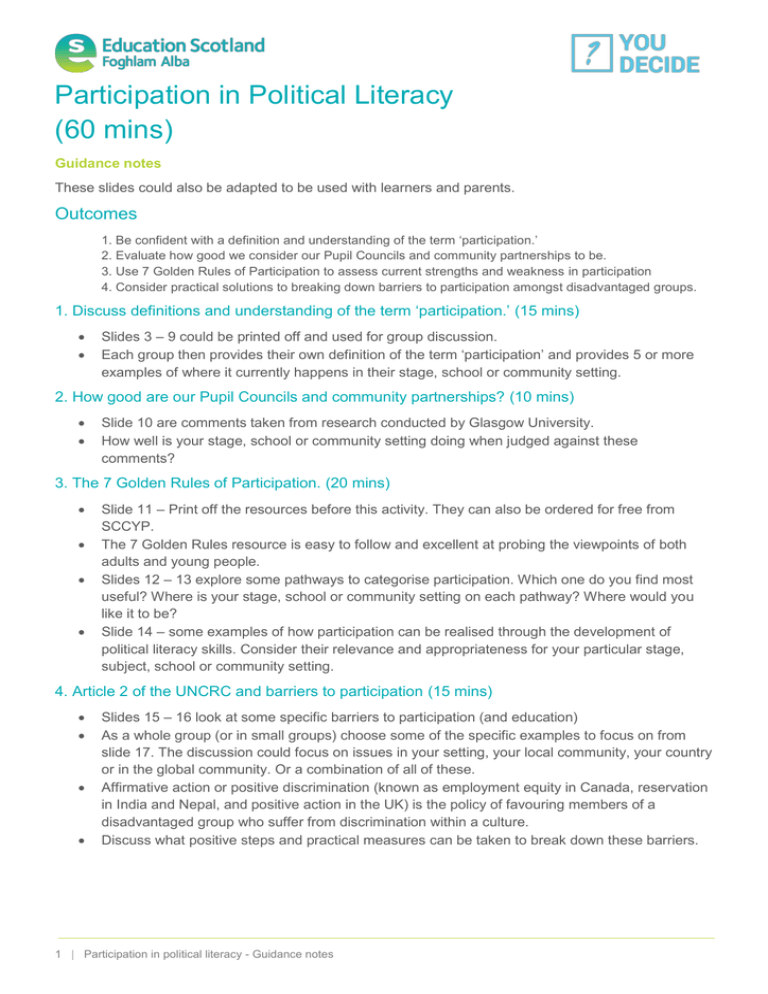
Participation in Political Literacy (60 mins) Guidance notes These slides could also be adapted to be used with learners and parents. Outcomes 1. Be confident with a definition and understanding of the term ‘participation.’ 2. Evaluate how good we consider our Pupil Councils and community partnerships to be. 3. Use 7 Golden Rules of Participation to assess current strengths and weakness in participation 4. Consider practical solutions to breaking down barriers to participation amongst disadvantaged groups. 1. Discuss definitions and understanding of the term ‘participation.’ (15 mins) Slides 3 – 9 could be printed off and used for group discussion. Each group then provides their own definition of the term ‘participation’ and provides 5 or more examples of where it currently happens in their stage, school or community setting. 2. How good are our Pupil Councils and community partnerships? (10 mins) Slide 10 are comments taken from research conducted by Glasgow University. How well is your stage, school or community setting doing when judged against these comments? 3. The 7 Golden Rules of Participation. (20 mins) Slide 11 – Print off the resources before this activity. They can also be ordered for free from SCCYP. The 7 Golden Rules resource is easy to follow and excellent at probing the viewpoints of both adults and young people. Slides 12 – 13 explore some pathways to categorise participation. Which one do you find most useful? Where is your stage, school or community setting on each pathway? Where would you like it to be? Slide 14 – some examples of how participation can be realised through the development of political literacy skills. Consider their relevance and appropriateness for your particular stage, subject, school or community setting. 4. Article 2 of the UNCRC and barriers to participation (15 mins) Slides 15 – 16 look at some specific barriers to participation (and education) As a whole group (or in small groups) choose some of the specific examples to focus on from slide 17. The discussion could focus on issues in your setting, your local community, your country or in the global community. Or a combination of all of these. Affirmative action or positive discrimination (known as employment equity in Canada, reservation in India and Nepal, and positive action in the UK) is the policy of favouring members of a disadvantaged group who suffer from discrimination within a culture. Discuss what positive steps and practical measures can be taken to break down these barriers. 1 | Participation in political literacy - Guidance notes
